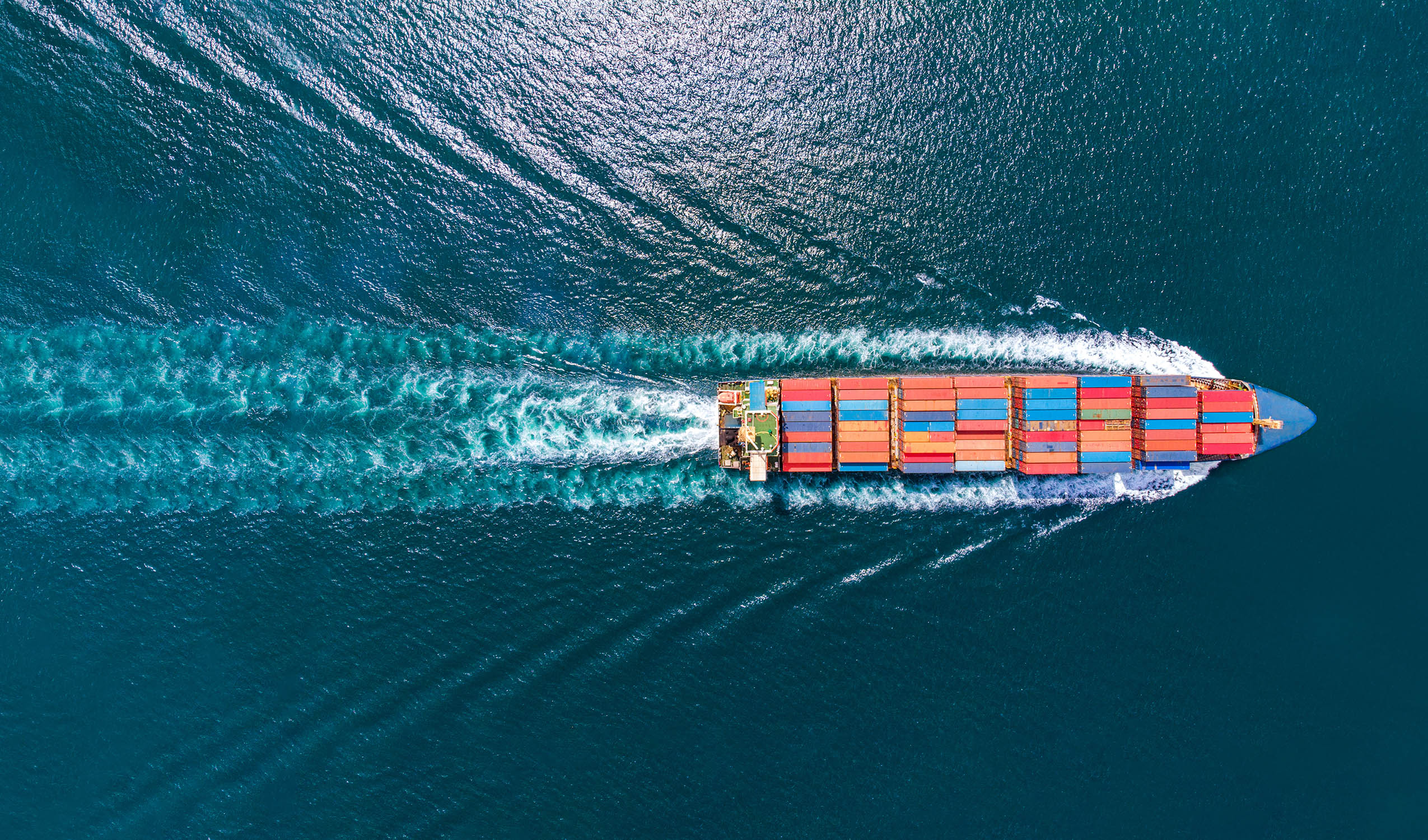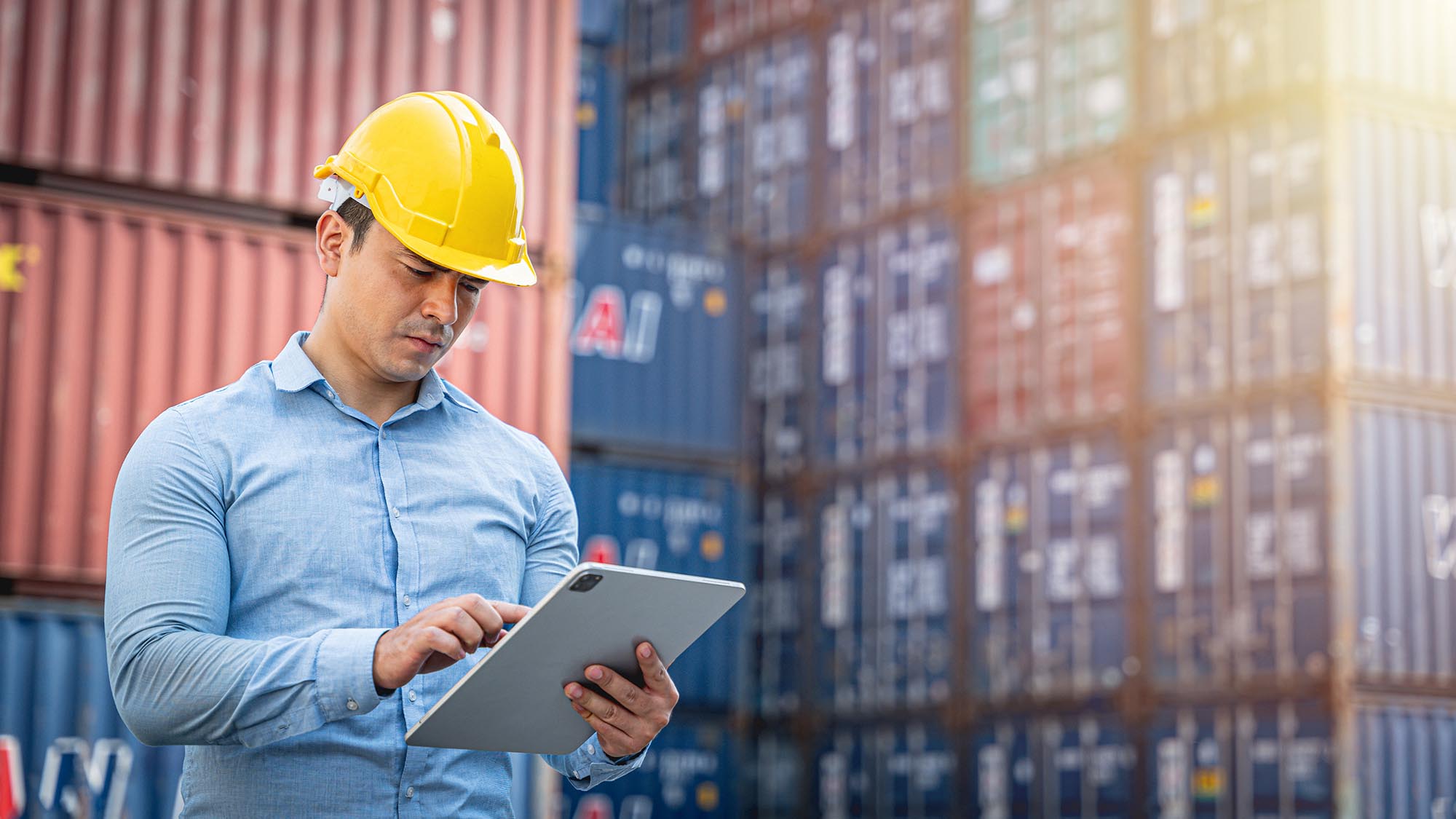Copyrights 2022/23: Lexzau, Scharbau GmbH & Co. KG, Bremen (Germany). Concept and realization vibrio | Imprint | Privacy | Cookie Settings


The transport of dangerous goods by sea is subject to special regulations. Unlike trucking, where only short transport distances are covered and professional help can be called quickly, a container ship is in the middle of the ocean. With a cargo volume of 24,000 TEU, or 24,000 standard containers that are just under 20 feet or a good six meters long, any small problem can turn into a disaster. In the following, I will describe how shippers can take the best possible precautions for their dangerous goods shipments.
There are ten points to pay particular attention to:
In principle, all worldwide dangerous goods transport regulations are based on the United Nations’ specifications, which regulate the testing and classification criteria in a uniform manner. The central regulation governing the international transport of dangerous goods by ocean-going vessel is called the “IMDG Code“. The abbreviation stands for “International Maritime Dangerous Goods Code”. This regulation is reissued every two years by the International Maritime Organization(IMO) in London. The updates are called “Amendments” and the 2022 version is already the 40th edition. Since national legislation must legally exist as a basis, the IMO member states have each issued their own framework regulations, which designate the IMDG Code as national law. In Germany, this regulation is called “GGVSee”.
Tip: Make sure to always use the latest edition of the regulations and avoid references to outdated versions. We still see entries in promotion orders from 1999. If in doubt, obtain information from the Federal Ministry of Digital Affairs and Transport. The Ministry publishes the latest version of the GGVSee on the Internet.
The IMDG Code has provided detailed regulations for these activities in Chapters 4 and 5. With defined exceptions, all packaging must be type-tested and bear the so-called “UN coding”. This is a coding system for dangerous goods packaging that documents, among other things, the type, material and resistance of a package. This coding always starts with the letters “UN” followed by the packing code, e.g. “1A1”. These packages are particularly safe due to passed drop or pressure tests. The admissibility of a packaging for a specific UN number can be determined via corresponding entries in the Dangerous Goods List (Chapter 3) of the IMDG Code.
Tip: The regulation entries contain maximum sizes for the packages. For liquids, the maximum volume is given in liters. This figure is often confused with the weight. If the consistency is greater than 1 (= water), the weight can be numerically higher than the permitted volume and lead to queries.
When marking dangerous goods, it must be ensured that the required dangerous goods information according to chapter 5.4 is included. All required labels must exactly match the specified patterns in size, color and durability.
Tip: There are specifications for the character height of the dangerous goods marking! This is what the control authorities like to find fault with. Be sure to also ensure that the marking and labels are durable and firmly attached to the packages. Skinability and readability after three months of exposure to seawater is required!
Provide clear and compliant information about your dangerous goods for ocean shipping from the start. The transport chains are diverse and often start shortly after the order is received with the booking at the shipping company. Exact data is already required here in order to place a successful booking. This concerns not only the correct dangerous goods information, but also details on outer and inner packaging, quantities, gross and net weights. As a rule, the shipping company requires a preliminary Dangerous Goods Declaration (DGD) (“Pre-DGD”) with all details. Every query costs nerves, time and money and jeopardizes the planned transport process. Have the carrier include all hazardous materials data in the Bill of Landing – the bill of lading – even if it is not mandatory. Reason: The B/L is often the only document available on the import side that describes the goods. It is the starting point for all transport documents.
Tip: Do you also ship chemicals that are not dangerous goods? Make things a little easier for those involved in the transport and document these products in your orders with the note “no dangerous goods in the sense of the transport regulations” – in this way you create clarity.

Even though this requirement has been in place for decades, there are still shippers today who are not aware of their obligations, or who know other procedures from trucking. For maritime shipping, the shipper must provide the dangerous goods data in a structured manner. This can be done in the form of a traditional document, or by electronic data interchange (EDI). Chapter 5.4 of the IMDG Code provides assistance. Here the contents and the sequence of the data are specified. Also, in addition, remember to mention the separation groups and the 24-emergency number. In any case, the name and position of the person responsible must be indicated. In the case of a document/form, a signature is mandatory in addition, even if a PDF document is sent by e-mail – this is electronic sending, but does not fall under the term “data exchange”. By the way, a specific form is not mandatory. However, since the IMDG Code contains a model form, most cargo operators follow it.
Tip: The DGD is usually combined with the container packing certificate, which must also be signed by the container packer. Be sure to send an update of the DGD as soon as possible when a container is finished packing to your carrier (“final DGD”). The document is important for the shipping company and regulatory authorities.
Many shippers wonder how to assess the condition and suitability of a freight container. Because of the prevailing equipment shortage, shipping companies today use pretty much every available container. However, by nature, each container is different and none is brand new. Bumps they all have. Due to many operations in different environments and rough handling in the ports, the containers have to take a lot of punishment. But can these also be used for hazardous goods? In principle, it makes no difference what goods are loaded.
An indication of the general approval for intermodal transport is provided by the “CSC Safety Approval” sign, which must be attached to every container. “CSC” means “Container Safety Convention.” This convention defines minimum standards for container security. In addition to the date of manufacture, maximum gross weight and stacking load, the inspection status of the container can also be read on this plate. A brand new container must be inspected for the first time after five years and every two and a half years thereafter. The date of the next test is noted on the plate and must be valid at the start of transport.
As an alternative to the stamped date, there is an alternative inspection scheme that does not require fixed inspection intervals and is used almost exclusively by shipping companies. This system is called “ACEP”, which stands for “Approved Continuous Examination Program”. By using this alternative scheme, container owners define a continuous container maintenance program and have this acknowledged by their competent authority. As a rule, a “short inspection” is performed during each depot run. In plain language: If the container has the entry “ACEP” on the CSC plate, then it is – theoretically – considered fit for transport. If the stamped date has expired and there is no “ACEP”, then the container may not be transported.
Each shipper must check this. Also, containers with obvious structural frame damage must not be loaded. Details of this are in the CSC agreement. So be sure to inspect the empty container for defects before loading!
Tip: Familiarize yourself with the terms and conditions of the CSC. In addition, the shipowners also use their own “repair standards” such as “IICL.6”, “UCRIC” – here, too, the container components are described with the permitted tolerances (dents, cuts, rust).

The segregation requirements of hazardous materials in ocean shipping differ drastically from those in truck, rail or inland waterway shipping. The contents of a container packed for sea transport can no longer be accessed during the sea voyage. If incompatible substances are loaded into a container, this can have dramatic consequences in an emergency. So what is to be done? Chapter 7 of the IMDG Code provides the necessary regulations in this regard. General segregation rules of dangerous goods classes among each other are defined via a segregation matrix. In this context, the subsidiary hazards of a dangerous good are also to be treated as a “class”. The dangerous goods list in chapter 3 provides further information on additional segregation requirements. The term “segregation group” should be emphasized here: there are a total of 18 of these. Due to their incompatibilities, some substances are firmly assigned to a defined substance group, e.g. “segregation group 1 – acids”. In conjunction with the separation regulations, this results in clear specifications: If substance A may not be loaded together with acids and substance B belongs to the “segregation group 1 – acids”, then both may not be loaded together. Unfortunately, it gets a bit complicated with collective entries (“N.O.S.”). This is because these substances can also have contents relevant to the segregation group, but these are not directly identified by the regulations. Here, the shipper is required to check his substances for possible segregation groups and to indicate these so that safe transport is ensured in the container as well as on board.
Tip: Especially with the countless dangerous goods that are classified in a collective entry, it is often asked twice whether a segregation group is to be applied, especially if, for example, the term “acid/acid” appears in the technical name and the shipping company suspects a separation group. If you are sure that your substance is not subject to any segregation group, then we recommend the note “No segregation group applicable” in the documents – thus creating a clear basis for loading.
Secure fastening of the goods in the freight container is very important and must be carried out professionally (“seaworthy stowage”). There are various methods of securing cargo, for example with belt systems, air bags or wooden beams, which are described in the “CTU Packing Guidelines”. There are also good practical tips here on checking before loading, securing loads and what to do after packing. Perennial issues are gaps and clearances between cargo items and inadequate securing of cargo in the door area. Due to the movements of the ocean-going vessel in all directions, unfilled cargo gaps can increase during transport and cause damage as a consequence. If a liquid is dripping out of a container during the sea voyage, it becomes dangerous, because crew members have limited resources and can do little themselves. In the best case, the shipping company manages to get the affected container off the ship as quickly as possible at the next port. Due to the large number of containers loaded, this results in high additional costs, especially if an unscheduled emergency port has to be called at. In the far worse case, released substances tend to self-ignite or react dangerously with other substances. A fire on board is difficult to fight, even if the ship is completely surrounded by water.
Tip: Have your loading personnel regularly attend practical training courses on load securing – that way you are on the safe side. Provide sufficient load securing equipment, even if it appears to be a cost factor. When shipping hazardous materials by sea, you should generally remember this saying: “If you think that safety is expensive, try an accident.”
Unfortunately, in today’s world, we regularly see containers being removed from the cargo list shortly before they are loaded onto ships. This is often due to last-minute queries from the shipping companies. In our highly labor-intensive world, shipowners’ inspection operations have often been relocated to service centers in other continents. The test criteria are very strict and do not allow any deviations. It is about requesting a safety data sheet in a specific language, more detailed information on technical names, deviation of a flash point from regulatory entries or packaging information without UN coding. The possibilities are limitless and the requests are usually impossible to fulfill in a timely manner to still save the shipment. The result: extra work, frustration, angry customers and extra costs.
Tip: Problems can never be completely avoided. Take the carrier’s request for assistance seriously, be cooperative, and try to answer open questions promptly or provide additional documentation. In some cases, it’s only a matter of small details that decide whether the goods are loaded or whether they spend weeks in storage at the port.
Or also: other ports, other regulations. While the IMDG Code harmonizes things on an international level and regulates them in the same way, many countries and ports around the world have introduced a host of additional applicable regulations that can make life more difficult for the shipper of dangerous goods. The USA, for example, has implemented its own set of regulations with its 49CFR, which adapts and tolerates many international regulations, but in parts has individual special rules that must also be taken into account from abroad if one does not want to be “stranded” with one’s goods in a US port.
The state of Singapore, in turn, divides hazardous materials into three categories (“PSA Groups”). Each of these categories has specific additional conditions, in particular they regulate the allowed stay within the port area. Since Singapore, as a mega-hub, plays a central distribution role in Asia, difficulties – and of course extra costs – have to be calculated, especially in the case of “PSA Group I”.
European ports, such as Antwerp, have also introduced special regulations on port registration, maximum stay in port and restrictions on certain UN numbers that must be complied with. Arab states have a general problem as soon as the term “alcohol” appears. Brazil insists on Portuguese documents and Dubai has its own banned list for the import of certain goods and substances. China requires GHS labels in local language.
Tip: Involve your seaport forwarder in your planning – he can give you hints and information to make your work easier and eliminate possible stumbling blocks even before the transport.
There are many other shipping difficulties for certain hazardous materials. The first to mention would be additional shipping restrictions. Based on problems, difficulties and accidents with certain dangerous goods, one or the other shipping company has introduced its own prohibited lists. For example, it is difficult to obtain a booking acceptance for thiourea, calcium hypochlorite or activated carbon, as these products have been the cause of ship fires several times in the past.
The situation is not made easier by the cooperation of different shipping companies on one ship, because what one still accepts, the ship owner then blocks. There are also problems with substances that serve as precursors for drug or chemical weapons production and appear in corresponding lists. Wooden pallets without proof of heat treatment are rejected by most countries. The list of special features is long.
Tip: Restrictions may depend on the transport route or shipping company. In any case, timely testing is beneficial. Be sure to also contact your customers in the receiving country to confirm import capabilities before your container must return due to import rejection.
Those were my ten points that you should definitely consider when preparing to ship your hazardous materials by sea. As you can see, there are easier things in the world than transporting dangerous goods by sea. Logistics requires expert knowledge, experience and a strong international partner network. Therefore, do not be afraid to approach me with your questions. As a dangerous goods safety advisor for the Leschaco group of companies, the safe shipment of dangerous goods is not only my profession, but my passion.
Illustrations © tuastockphoto – stock.adobe.com, Pitchayaarch – stock.aobe.com and Yellow Boat – stock.adobe.com
The Leschaco Group is a global logistics service provider that combines Hanseatic tradition with cosmopolitanism and a spirit of innovation. “Experienced. Dedicated. Customized.” This is a fitting summary of the company’s philosophy: On the basis of decade-long experience teams of specialists set up customized solutions
› Sea Freight
› Air Freight
› Tank Container
› Contract Logistics
› Supply Chain Solutions
› Intermodal Transports
› Industrial Solutions
› Services
Lexzau, Scharbau GmbH & Co. KG
Kap-Horn-Straße 18
28237 Bremen
Deutschland
phone (49) 421.6101 0
fax (49) 421.6101 489
info@leschaco.com
Copyrights 2022/23: Lexzau, Scharbau GmbH & Co. KG, Bremen (Germany). Concept and realization vibrio | Imprint | Privacy | Cookie Settings